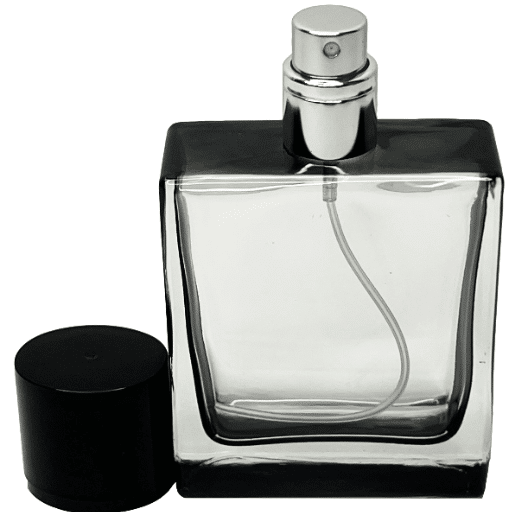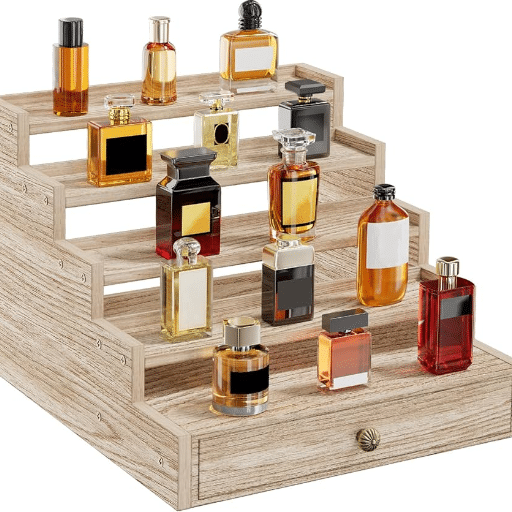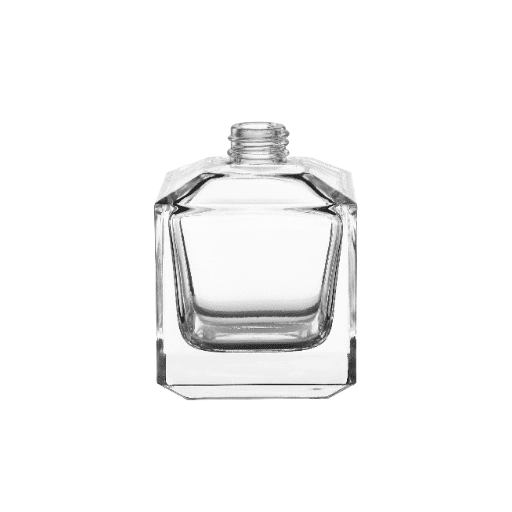Glass perfume bottles have long been a captivating blend of functionality and artistry. Carefully designed to preserve the delicate essence of perfumes, these bottles serve a dual purpose as both practical containers and stunning works of art. This blog post explores the fascinating world of glass perfume bottles, focusing on the intricate craftsmanship behind custom designs and the diversity found in collectible pieces. Readers will gain insights into the design process, the materials used, and the technical precision required to create these timeless containers. Additionally, we will examine how collections of these bottles tell stories of innovation, fashion, and culture through the ages. Whether you are a perfume enthusiast, a collector, or simply intrigued by the elegance of glasswork, this article will provide a detailed and authoritative exploration of glass perfume bottles in all their splendor.
What Makes Perfume Bottles Unique?
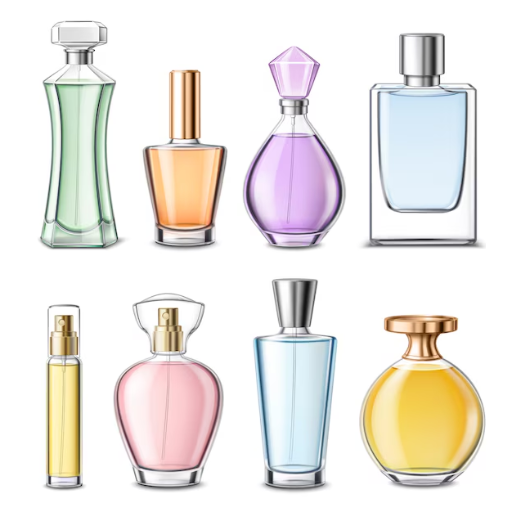
Perfume bottles are unique due to their fusion of artistic design and functional purpose. Unlike standard containers, these bottles must not only preserve the integrity of the perfume but also convey the essence of the fragrance through their aesthetic. The design often incorporates intricate glasswork, innovative shapes, and luxurious materials to evoke a sense of elegance and exclusivity. Each bottle is a product of meticulous craftsmanship, with details such as precise sealing mechanisms to prevent evaporation and decorative elements that reflect cultural trends and individual brand identities. This combination of technical precision and artistic expression elevates perfume bottles into iconic symbols of style and innovation.
Exploring Different Designs of Perfume Bottles
Perfume bottle designs have evolved significantly over time, blending aesthetics with functionality to create packaging that is both visually appealing and practical. Designers employ a variety of shapes, including minimalistic cylindrical forms, ornate sculptural designs, and innovative asymmetrical structures. Materials range from classic translucent glass to modern combinations of metal, ceramic, and sustainable alternatives, each chosen for its ability to protect the fragrance and convey the brand’s identity.
The influence of cultural and historical trends is evident in many designs. For example, art deco-inspired bottles from the 1920s often feature geometric patterns and bold colors, while contemporary designs are frequently minimalist and eco-conscious. Customization has also emerged as a notable trend, allowing consumers to personalize bottles with engravings or unique decorative elements. These design innovations reflect the dual priorities of appealing to consumer sensibilities and ensuring optimal storage conditions for the fragrance.
Each bottle strives to strike a balance between technical functionality—such as preserving the perfume’s stability and ensuring ease of application—and artistic creativity, which draws attention on retail shelves and conveys a narrative about the fragrance within.
Understanding the Importance of Packaging in Perfume Bottles
Packaging plays a critical role in defining the value and identity of a perfume. From my perspective, it goes beyond simply protecting the fragrance inside; it creates an emotional connection with the consumer. The design must ensure the perfume is preserved effectively, maintaining its composition and longevity by shielding it from light, air, and temperature variations. At the same time, the aesthetics of the bottle need to appeal to the target audience, with shapes, colors, and materials that embody the story and essence of the fragrance. Ultimately, a well-executed package not only enhances practicality and usability but also elevates the luxury perception of the product, influencing purchase decisions and brand loyalty.
The Evolution of Glass Perfume Bottles Over Time
Glass perfume bottles have undergone significant evolution, both in design and functionality, reflecting advancements in manufacturing technology and shifting consumer preferences. Initially, early perfume bottles were crafted by hand, often utilizing rudimentary glassblowing techniques that resulted in unique but inconsistent designs. These early examples prioritized ornamentation over practicality, frequently featuring intricate patterns and shapes.
With the advent of industrialization in the 19th century, the production of glass bottles became more standardized due to the implementation of automated molding techniques. This allowed for precise, repeatable designs capable of meeting growing commercial demands. By the 20th century, technical capabilities had expanded to include innovations such as colored or frosted glass finishes, enhancing the bottle’s ability to protect perfume from light exposure and thus improve product longevity. Specific parameters like ultraviolet (UV) light transmittance were addressed, with dark-tinted glass designed to block wavelengths below 400 nm being introduced.
Simultaneously, aesthetic aspects evolved to align with branding strategies. Advances in precision cutting, engraving, and adhesive labeling introduced new artistic possibilities. For example, designers began incorporating ergonomic considerations, such as reduced neck dimensions for controlled dispensing and structural reinforcements to prevent breakage under typical handling pressures (commonly 5-10 MPa for tempered glass).
Today, modern perfume bottles combine functionality with visual appeal. Sustainable practices, such as lightweight designs (10%-15% reduction in glass mass) while maintaining structural integrity, and the use of recycled glass components, are becoming industry standards. These innovations ensure that bottles fulfill both technical and artistic requirements while aligning with environmental considerations.
How to Choose the Right Perfume Bottle for Your Needs?
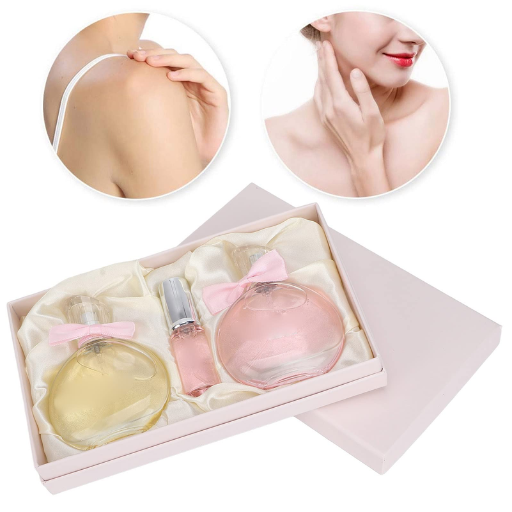
When selecting the right perfume bottle, consider factors such as material, capacity, and design. The material should align with durability and aesthetic requirements; glass is a popular choice due to its impermeability and luxurious feel. Capacity depends on usage needs—smaller bottles (5-15 mL) are ideal for travel, while larger options (50-100 mL) suit daily use. The design should complement the brand identity or personal preferences, ensuring it is both visually appealing and functional. Additionally, consider sustainability elements, such as bottles made from recycled materials, to support eco-conscious practices.
Factors to Consider in Size and Capacity
When determining the appropriate size and capacity, key considerations include function, convenience, and intended user base. Smaller capacities, ranging from 5-15 mL, are highly portable and ideal for single-use or travel purposes, minimizing bulk and optimizing space. Mid-range capacities, typically around 30-50 mL, strike a balance between portability and practicality for routine use. Larger options, such as 75-100 mL, are more suitable for frequent users or products with prolonged application needs, reducing refill frequency.
Technical Parameters to Evaluate:
- Volume Tolerance: Ensure the container adheres to ISO standards, with volume tolerances typically within ±5% of the labeled capacity.
- Material Thickness: For durability, the material thickness of glass bottles should range from 1.5-2.5 mm, while plastics should maintain a minimum of 0.6 mm for rigidity.
- Weight Considerations: Glass packaging may weigh between 100-500 grams depending on size, whereas lightweight plastics are around 20-200 grams.
- Closure System Compatibility: Confirm that the bottle’s neck diameter (commonly 18/410, 24/410 sizes) fits standard pumps, droppers, or caps.
- Pressure and Impact Resistance: Evaluate product durability under 0.5-1.0 MPa internal pressure to ensure leak-proof performance during storage and transport.
By aligning these parameters with functional and aesthetic goals, the selected size and capacity can cater to user requirements effectively while maintaining quality and performance.
Decoding Fragrance and Scent Preferences
Understanding fragrance and scent preferences requires recognizing the interplay between individual psychology, cultural influences, and olfactory responses. Personally, I would consider both top notes, which provide an initial impression, and base notes, which linger, to identify my preferences. Research from leading sources suggests that floral and citrus scents often appeal to those seeking freshness and energy, while woody and musky aromas tend to resonate with individuals desiring warmth and sophistication. My approach would involve sampling various combinations to determine which resonates most with my unique personality and mood.
Choosing Between Spray and Roller Options
When choosing between spray and roller options, I would prioritize practicality and personal usage preferences. Spray perfumes are ideal for those who want a quick and even application, as they distribute fragrance efficiently over a wider area. They also tend to project more and work well for creating a noticeable scent trail. On the other hand, rollerball perfumes offer more control and precision, allowing targeted application to pulse points while minimizing waste. They are compact and travel-friendly, making them convenient for on-the-go touch-ups. Based on my needs, I would explore how each format fits into my lifestyle, considering factors like portability, application preferences, and scent longevity.
Where to Buy Perfume Bottles Wholesale?

There are many avenues to explore when considering where to buy perfume bottles wholesale. Alibaba, Amazon Business, and eBay for instance, stock a wide variety of perfume bottles at great prices. For more specialized items, SKS Bottle & Packaging and Berlin Packaging deal in fine bulk customizable perfume bottles. Regional wholesalers and other local distributors might be the most beneficial for businesses that require faster shipping or want to speak with someone face-to-face. For every option, consider the prices, shipping policies, and minimum order quantities relative to your company goals first.
Top Suppliers of Wholesale Perfume Bottles
- SKS Bottle & Packaging
SKS Bottle & Packaging offers an extensive range of wholesale perfume bottles suitable for businesses of all sizes. Their selection includes glass, plastic, and aluminum bottles with customizable designs, caps, and spray tops. They provide bulk pricing, easy online ordering, and flexible shipping options to meet various business demands. The company prides itself on quality assurance and reliable customer service, making them a preferred choice for many.
- Berlin Packaging
Berlin Packaging specializes in high-quality perfume bottles and packaging solutions. Their product line includes elegant glass bottles and atomizers in various shapes and finishes. They cater to businesses with an emphasis on branding, offering personalized consultations and design services. With competitive pricing and a commitment to sustainability, Berlin Packaging is a leading supplier in the industry.
- Fuzhou Longlu Packaging Co., LTD
Fuzhou Longlu Packaging Co., LTD is a trusted leader in the design and production of premium custom perfume packaging solutions. With a sharp focus on quality and innovation, we cater to global fragrance brands seeking packaging that enhances their product’s appeal and market presence.
Our extensive range of offerings includes expertly crafted perfume bottles, elegant packaging boxes, precision-engineered tops, and high-performance sprays. Each product is designed with meticulous attention to detail to ensure functionality, durability, and aesthetic excellence. By leveraging advanced manufacturing techniques and industry expertise, we provide tailor-made solutions that align seamlessly with the branding and vision of our clients.
What sets Fuzhou Longlu apart is our commitment to delivering not just packaging, but an elevated brand experience. From conceptualization to final production, we prioritize customization, quality assurance, and timely delivery to meet the exacting standards of modern fragrance brands. Partner with us to transform your packaging into a reflection of your brand’s sophistication and uniqueness.
Understanding the Quality and Selection in Wholesale
When evaluating the quality and selection in wholesale, I prioritize a detailed comparison across suppliers. The top platforms emphasize diverse product catalogs, focusing on material durability, aesthetic design, and functional versatility, alongside transparent quality certifications. Additionally, I assess supplier credibility through verified reviews and ratings, ensuring consistent standards. Bulk buying options often include customization features and flexible shipping arrangements, allowing me to align purchases with both operational needs and cost efficiency.
Benefits of Buying Perfume Bottles in Bulk
Buying perfume bottles in bulk offers significant advantages in terms of cost efficiency, inventory management, and customization potential. Firstly, bulk purchasing reduces unit costs due to economies of scale, making it ideal for minimizing expenses in large-scale operations. Additionally, bulk procurement ensures a steady supply, mitigating risks associated with stock shortages or shipping delays. Customization options, such as design modifications or labeling, are often more accessible when ordering in larger quantities, which adds value for branding purposes. Key technical parameters to consider include bottle material (e.g., glass or PET with specified thickness for durability), capacity (commonly ranging from 30ml to 100ml), and compatibility with sprayers or closures. Ensuring compliance with ISO or FDA packaging standards is also critical for maintaining product safety and quality.
Why Invest in Custom Glass Perfume Bottles?
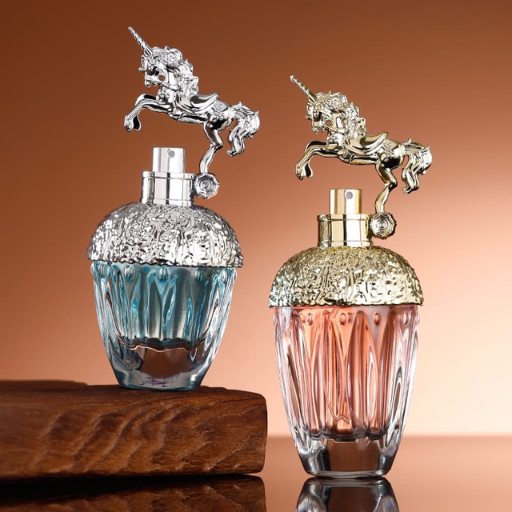
Custom glass perfume bottles provide a unique opportunity to enhance brand identity and market differentiation. With bespoke designs, brands can create packaging that aligns with their aesthetic vision, resonating with target consumers. Glass is a premium material known for its durability, recyclability, and ability to preserve the fragrance quality by preventing chemical interactions. Additionally, customization facilitates the incorporation of specific functional features like high-quality sprayers or luxurious finishes, enhancing user experience. Investing in custom glass bottles further enables compliance with regulatory standards while supporting a sustainable packaging strategy, adding both value and credibility to the product.
The Art of Custom Design in Perfume Bottles
Custom design in perfume bottles requires a careful balance between aesthetics, functionality, and technical precision to enhance both the brand identity and user engagement. The process begins with material selection, commonly using high-quality glass due to its inert properties, durability, and ability to preserve fragrance integrity by avoiding undesirable chemical interactions. Key technical parameters include glass thickness (typically 2-5 mm for structural safety and elegance), weight (commonly ranging from 50g to 300g to convey luxury), and surface finish options like frosted, glossy, or matte textures.
Design customization often incorporates advanced techniques such as 3D modeling and CNC molding to achieve intricate shapes, brand-specific engravings, or unique contours. Functional elements are equally vital; features like spray pump compatibility (standard neck diameters include 15mm or 18mm for uniform fitting) and cap sealing mechanisms ensure optimal performance and user satisfaction. Sustainability is another critical dimension, with eco-friendly practices such as using recycled glass, reducing production emissions, or applying water-based decorative coatings gaining traction.
By synthesizing technical innovation, regulatory compliance, and creative design, custom perfume bottles transform into more than mere containers—they become integral extensions of the brand that convey value, prestige, and consumer-oriented functionality.
Enhancing Brand Identity with Custom Bottles
Custom perfume bottles serve as a vital tool for strengthening brand identity by combining functional design with aesthetic appeal. These bespoke bottles demonstrate a brand’s commitment to quality and innovation, leaving a lasting impression on consumers. Below, we address critical factors and technical parameters involved in creating bottles that effectively enhance brand identity:
- Material Selection
Materials must align with the brand’s image and sustainability goals. Common options include high-quality glass, bioplastics, or recycled materials. For glass bottles, ensure a thickness of 3-5mm for durability and clarity, while maintaining a smooth surface finish (Ra ≤ 0.8µm).
- Design Accuracy and Aesthetic Appeal
Precision mold tooling is crucial for achieving unique shapes and patterns. Tolerances should not exceed ±0.2mm to preserve design fidelity. Surface treatments such as frosting, engraving, or metallic coatings (chromium or platinum) can add luxury and exclusivity.
- Ergonomics and Functionality
The bottle shape and size must guarantee ease of use. Consider practical dimensions (e.g., 50ml or 100ml volume options with a standard neck finish of 15-20mm). Pumps or sprayers should provide consistent dosage (0.08-0.12ml per spray) without leakage.
- Branding Integration
Logos, typography, or visual elements should be prominently placed, using techniques such as silk-screen printing, hot stamping, or embossing. Ensure UV resistance of decorative coatings (≥500 hours) to maintain visuals over time.
- Sustainability Considerations
To meet eco-conscious consumer demands, incorporate recyclable materials and reduce overall weight without compromising durability (ideal bottle weight ≤200g for 100ml). Use water-based inks for labels and minimalistic packaging to further enhance environmental appeal.
By balancing these technical parameters with creative expression, brands can craft custom perfume bottles that not only elevate their identity but also resonate with consumers on an emotional and functional level.
Exploring Packaging Solutions for Custom Bottles
When designing packaging solutions for custom perfume bottles, it is essential to prioritize sustainability, functionality, and brand aesthetics. Eco-friendly options such as biodegradable or recyclable materials, including glass or recycled PET plastic, are increasingly popular among environmentally conscious consumers. These materials not only support sustainability goals but also offer durability and visual clarity. Incorporating flexible packaging such as refillable components can further reduce waste and align with circular economy principles.
From a functional standpoint, the packaging must ensure the protection of the perfume’s contents from light, heat, and air to maintain product integrity. Techniques such as UV-coated or tinted glass can prevent photodegradation, while air-tight seals and pumps add an additional layer of preservation. Furthermore, ergonomic design considerations, such as lightweight bottles and intuitive dispensing mechanisms, improve user experience while ensuring convenience.
Lastly, packaging should reflect the brand’s identity and resonate with the target demographic. Minimalist designs with water-based inks for labels, embossed logos, or custom shapes can create a premium, memorable aesthetic. By leveraging these thoughtful packaging strategies, brands can achieve a balanced approach that addresses environmental needs, functional efficiency, and consumer appeal.
How to Properly Care for Your Perfume Bottles?
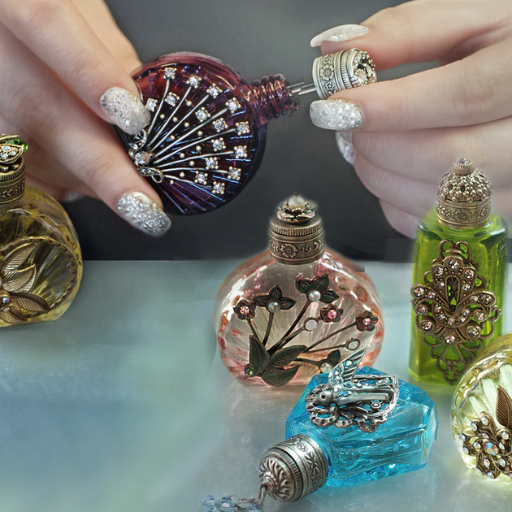
Proper care for your perfume bottles ensures both the longevity of the fragrance and the integrity of the packaging. First, store your perfume in a cool, dry place away from direct sunlight and fluctuating temperatures, as heat and light can degrade the fragrance composition. Always keep the lid tightly closed to prevent evaporation and contamination. Avoid excessive handling of the bottle, as oils from your hands can tarnish delicate finishes or labels. Additionally, consider storing them upright to maintain the stability of the liquid inside. By following these practices, you can preserve the quality and aesthetic of both the perfume and its packaging.
Tips for Cleaning Empty Perfume Bottles
In cleaning empty perfume bottles, I suggest starting off by soft rinsing the bottle with warm water to try to get rid of some fragrance. Attempting to rinse with boiling water is not recommended, because it will damage the more delicate elements made up of glass or plastic. Rather, I use a mixture of warm water and mild dish soap to get the insides of the bottle fully cleaned. Pour the mixture inside and swirl it around. For some of the more challenging areas like the nozzle and neck, a cotton swab or small brush may be useful as I can use them to get into the tight spots. Once I ensure all surfaces are contacted I proceed to rinse the bottle to remove any soap residue. Allowing the bottle to air dry is preferable, but only if it is in a well ventilated room. In the case where the stubborn perfume can’t seem to removed, mix a little rubbing alcohol or white vinegar with water, repeat the cleaning tasks previously stated, and then rinse until there is no smell or the bottle is clear. During the entire procedure, the utmost care is provided while holding the bottle in order to avoid breaking or damaging it.
Storage Solutions for Glass Perfume Bottles
To properly store my glass perfume bottles, I ensure they are kept in a cool, dark place away from direct sunlight and fluctuating temperatures, as UV rays and heat can degrade the perfume’s composition over time. I place them in an upright position on a stable surface to prevent leakage or spills. If possible, I store them in their original boxes, as these provide additional protection from light and dust. For optimal longevity, I maintain a storage temperature of roughly 59°F to 72°F, which is within the recommended range for preserving fragrance quality. Additionally, I avoid storing bottles in overly humid areas, such as bathrooms, as excess moisture can negatively impact both the bottle and the perfume.
Repair and Maintenance of Luxury Perfume Bottles
Proper repair and maintenance of luxury perfume bottles are essential to preserving their functionality and aesthetics. For cleaning the bottles, use a soft, lint-free cloth dampened with a mixture of warm water and a few drops of mild, non-abrasive soap. Avoid the use of harsh chemicals, as these can damage both the glass and any decorative elements, such as gold leaf or enamel. If the atomizer becomes clogged, carefully detach it (if removable) and rinse it with warm water, ensuring that no residue remains before reassembling. For stubborn clogs, a small amount of isopropyl alcohol (70%-90%) may be effective.
To maintain seals and caps, inspect regularly for signs of wear such as cracks or loose fitting. Replacement parts, often available through the original manufacturer or specialized suppliers, should match the original specifications to ensure a proper seal. Metal components prone to tarnishing, such as decorative caps, can be gently polished with a jewelry-grade microfiber cloth.
For structural damage to the glass, such as minor chips, professional restoration is recommended. Glass repair specialists can fill and polish chips using UV-curable resin and precision equipment, ensuring minimal impact on the appearance and integrity of the bottle. If the damage is severe or compromises the bottle’s ability to store liquid securely, consulting with a professional to fabricate a replica component might be necessary.
When handling luxury perfume bottles, always lift them from the base instead of the neck to avoid undue stress on weaker parts. Additionally, keep bottles stored upright to prevent leaking or pressure buildup, maintaining an ambient temperature of 59°F to 72°F to ensure internal stability. Regular care and attention not only prolong the lifespan of luxury perfume bottles but also preserve their value as collectibles or heirloom pieces.
Reference Sources
-
Packamor – Perfume Bottles Wholesale: Offers insights into creating custom perfume bottles with personalized designs.
-
Stoelzle Glass Group – Customized Glass Perfume Bottles: Focuses on tailor-made designs for perfumery and cosmetics.
-
My Modern Met – History of Artfully Designed Perfume Bottles: Explores the history of perfume bottles and their connection to glassmaking and artistic movements.
-
BI Packaging – History of Glass Perfume Bottles: Discusses the origins of glass perfume bottles and their evolution.
-
Rau Antiques – Perfume Bottles: A Collector’s Guide: Provides a guide for collectors, highlighting the variety and artistry of antique perfume bottles.
Frequently Asked Questions (FAQs)
Q: What are the benefits of using glass perfume bottles?
A: Glass perfume bottles offer several advantages, including preserving the fragrance quality, providing a high-end aesthetic, and being environmentally friendly compared to plastic containers. They also come in various designs, such as clear glass and frosted glass, which can enhance the presentation of your signature scent.
Q: Can I order custom glass perfume bottles in bulk?
A: Yes, many suppliers offer custom glass perfume bottles in bulk with options for personalization, such as adding logos or choosing specific colors and shapes. Bulk discounts are often available for larger orders.
Q: What are the popular sizes for glass perfume bottles?
A: Common sizes for glass perfume bottles include 3.4 oz, 2 oz, 1.7 oz, and smaller sample sizes like 10ml. These sizes cater to different needs, from travel-friendly options to full-sized bottles for a comprehensive fragrance collection.
Q: How can I choose the right cap for my glass perfume bottle?
A: Choosing the right cap depends on the type of perfume bottle you have. Options include mist sprayers, fine mist spray caps, roller balls, or decorative caps in materials like silver or gold. Each cap type offers a unique way to dispense the fragrance.
Q: Are there glass spray bottles suitable for essential oils?
A: Yes, glass spray bottles are suitable for essential oils, particularly those designed with fine mist spray capabilities. These bottles help in evenly distributing the essential oils in a manageable way, ideal for personal or professional use.
Q: What is the difference between roller bottles and spray bottles?
A: Roller bottles are equipped with a roll-on applicator, usually with a steel roller, making them ideal for applying oils or perfumes directly onto the skin. Spray bottles, on the other hand, dispense liquid in a mist form, suitable for fragrances that need to cover a larger area.
Q: Can I use refillable glass bottles for multiple types of perfumes?
A: Yes, refillable glass bottles are a convenient and eco-friendly option for storing different perfumes. They can be easily cleaned and reused, allowing you to switch fragrances without needing multiple bottles.
Q: Are there options for decorative crystal perfume bottles?
A: Absolutely, crystal perfume bottles are available for those who seek a luxurious and decorative option. These bottles often serve as beautiful keepsakes or gifts and can add an elegant touch to any fragrance collection.
Q: What should I consider when choosing a fragrance container for travel?
A: For travel, consider glass bottles that are small, such as 10ml or 1.7 oz, with secure caps to prevent leaks. Roller bottles or spray bottles with a fine mist are particularly practical for on-the-go use.
Q: How quickly can I expect delivery for custom glass perfume bottles?
A: Delivery times for custom glass perfume bottles vary depending on the supplier and order specifications. Typically, standard orders might take a few weeks, while expedited shipping options can reduce this time significantly.

